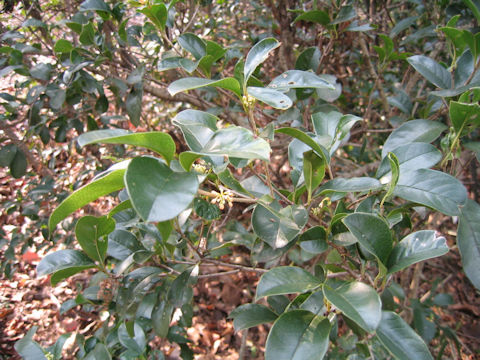
|
|
|
     |
|
|
|
中国からヒマラヤにかけて分布しています。わが国の九州南部にも自生しているという説もあります。「ぎんもくせい(銀木犀)」の変種で、高さは6メートルほどになります。葉は狭い長楕円形で対生し、ほとんど鋸歯がありません。雌雄異株です。9月から10月ごろ、葉腋に芳香のある淡い橙黄色の花を咲かせます。「きんもくせい(金木犀)」とは異なり、わが国でも雌株があるので結実します。中国語では「金桂(jin gui)」と呼ばれます。 |
|
|
モクセイ科モクセイ属の常緑小高木で、学名は Osmanthus fragrans var. thunbergii (syn. Osmanthus fragrans var. aurantiacus f. thunbergii)。英名は Fragrant olive。 |
|
|
The Fragrant olive (Osmanthus fragrans var. thunbergii) belongs to Oleaceae (the Olive family). It is a semi-tall evergreen tree that is distributed from China to the Himalayas. There is also a theory that it grows wild in southern Kyushu in Japan. It is a variant of the "Fragrant tea olive" (Osmanthus fragrans var. fragrans) and grows to about 6 m tall. The leaves are narrowly oblong, opposite, almost no serrations, and dioecious. The fragrant, pale orange-yellow flowers bloom in the axils of the leaves from September to October. Unlike the "Feagrant olive" (Osmanthus fragrans var. aurantiacus), it has female plants that bear fruit in Japan. In Chinese, it is called "金桂" (jin gui). |
|
|
[上・中1~2] 大阪府交野市「大阪市大付属植物園」にて、2005年01月19日撮影。 [中3・下] 同上にて、2006年02月15日撮影。 |

|
|
Shu Suehiro |